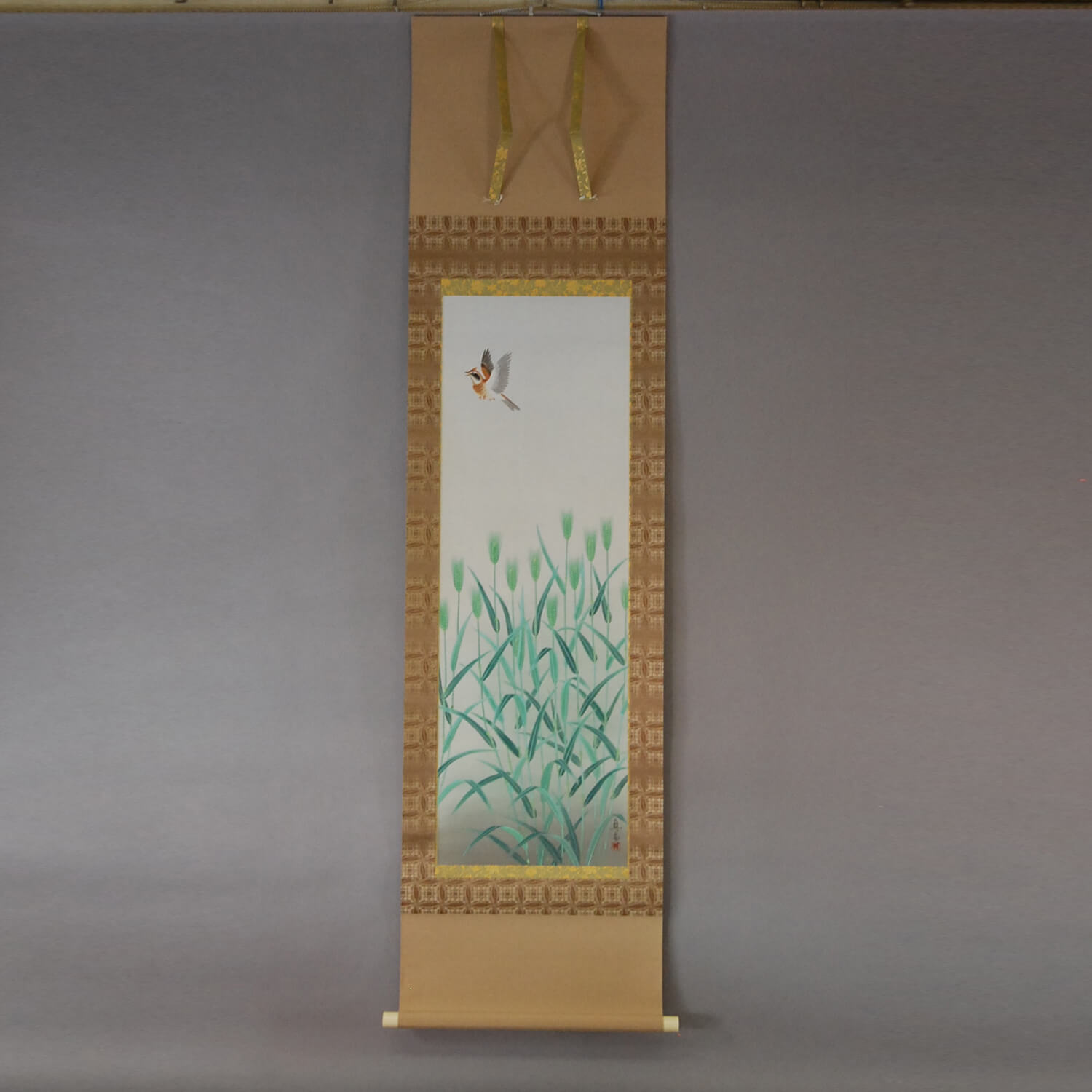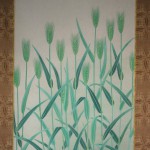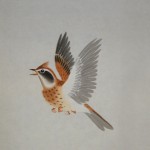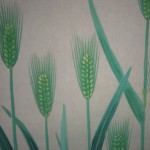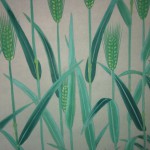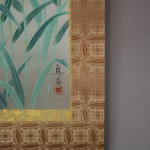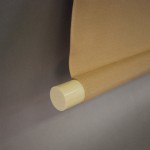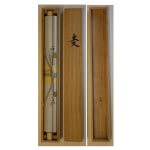Products Lineup
News / Blog
Other Menus
Kakejiku Hanging Scroll: Barley / Shin Tsuda - Mugi
- Product ID
- 0095
- Name
- Shin Tsuda
- Profile
1920-1991
A member of Nihon Bijutsuin
(The Japan Academy of Fine Art)- Size
- 545mm x 1910mm
- Roller End Material
- Artificial ivory
- Material of the Work
- Silk
- Price
- JPY 70,000
- Stock Condition
- In stock
- Payment: Click the Paypal Mark
- Duty and Taxes
Import duty and taxes are beyond our control and may apply to your shipment. Please noted that these fees are the responsibility of the buyer.
- Description
The combination of a skylark and green barley (or wheat) is the traditional subject for paintings in Japan. Skylarks are loved in many countries because the bird signifies the coming of spring. “The Lark Ascending,” which is a musical work by the English composer Ralph Vaughan Williams, is a good example. Like the skylark, a beautiful green barley field is also loved. For example, “The Wheat Field,” which are a series of oil paintings by Vincent van Gogh in Saint-Remy-de-Provence.
Shin Tsuda, a Japanese-style painter, was well known for “kachō-ga” (painting of flowers and birds). In this painting, vivid colors and the skylark is painted flying vigorously. This work can be enjoyed not only by Japanese people, but also people from other countries.

